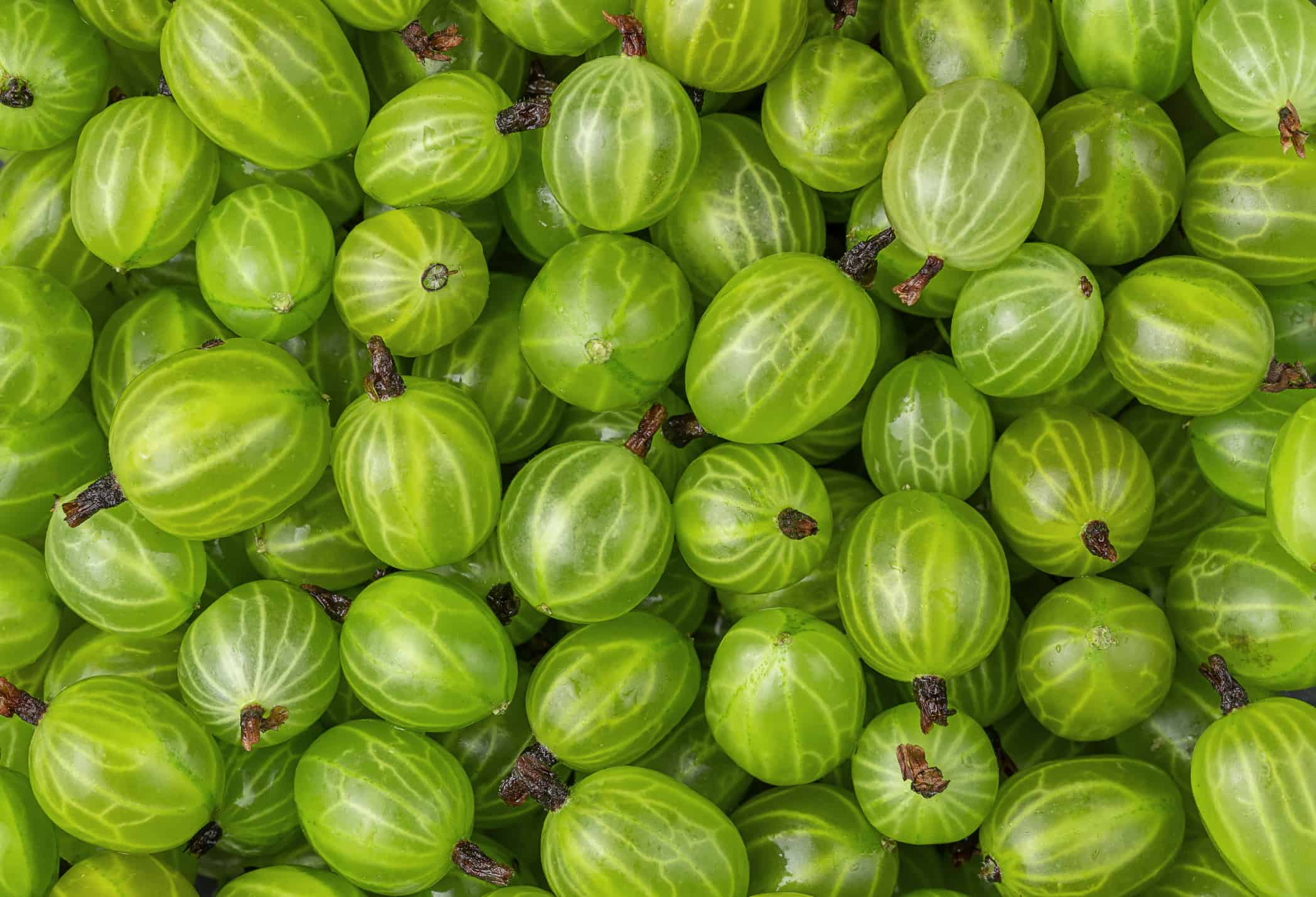Fruits are nature’s way of tantalizing our taste senses while supplying necessary vitamins and minerals. They are delicious, nourishing, and sometimes bursting with brilliant hues and flavors. The world of fruits can be explored in a very tasty way. Today we go on an expedition through a particular set of fruits that all have names that start with the letter “I.”
Even though fruits that start with I are less well-known than their more popular cousins like apples or bananas, they have distinctive qualities and flavors that make them interesting additions to our culinary arsenal. These fruits provide a compelling variety that merits our attention, ranging from exotic riches to lesser-known beauties. Let’s take a look!
1. Ilama
Classification: Annona diversifolia
The ilama fruit is a peculiar and exotic fruit that truly stirs one’s curiosity. At first glance, its outer appearance might remind you of a green, bumpy avocado. However, unlike an avocado, an ilama can reach sizes of up to six inches in diameter. Inside, the fruit reveals a soft, creamy flesh that’s white to pale pink, interspersed with shiny, brown-black seeds.
The ilama tree originates from Central America, and it mainly thrives in the tropical lowlands of Guatemala and El Salvador. However, with careful cultivation, it can also grow in other warm, subtropical regions.
A delightful aspect of the ilama fruit is its nutritional benefits. Not only is it a tasty treat, but it also offers significant amounts of vitamin C, a powerful antioxidant, and dietary fiber, which aids in digestion. Just as well, ilama has a good amount of calcium for bone health and potassium for maintaining a healthy heart. All of these make it a nutritious and delectable choice for any fruit lover.
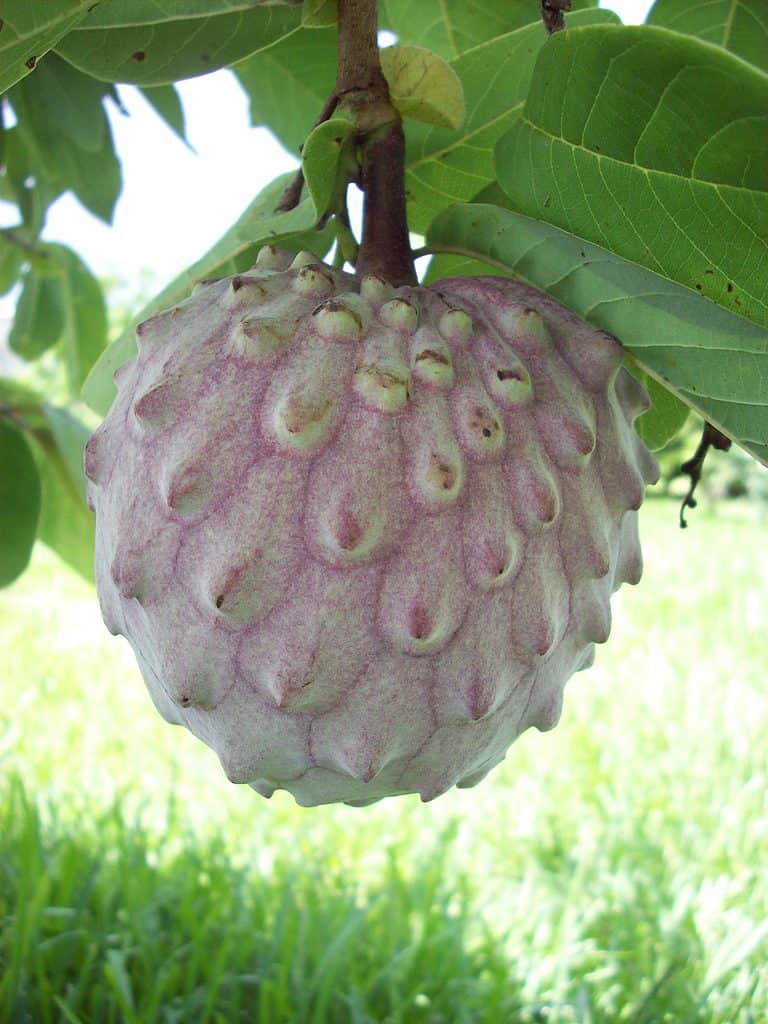
Most typically eat the ilama fruit with sugar.
©2,472 × 3,296 pixels, file size: 1.05 MB, MIME type: image/jpeg – Original / License
2. Indian Jujube
Classification: Ziziphus mauritiana
Another intriguing fruit that is indigenous to tropical and subtropical parts of Asia, including India, is the Indian jujube, commonly referred to as “ber”. Its round or slightly elongated form, usually ranging between one and two inches in diameter, can make one think of a little apple at first. Depending on the cultivar, its ripe exterior can range in color from pale yellow to reddish-brown while the inside is creamy white.
The Indian jujube tree is valued for its ability to endure heat, drought, and even excessive salt in the soil, making it a tough and adaptable plant. It often thrives in a variety of conditions. It frequently grows along roadsides, in orchards, and fields.
The Indian jujube is a little nutritional powerhouse. Vitamin C is abundant in it, providing it with potent antioxidant qualities. Additionally, it has a lot of fiber, which is good for the digestive system. The fruit also offers a good source of important nutrients including calcium, phosphorus, and potassium. Eating Indian jujube is a fantastic method to improve your health in addition to providing a unique flavor experience.
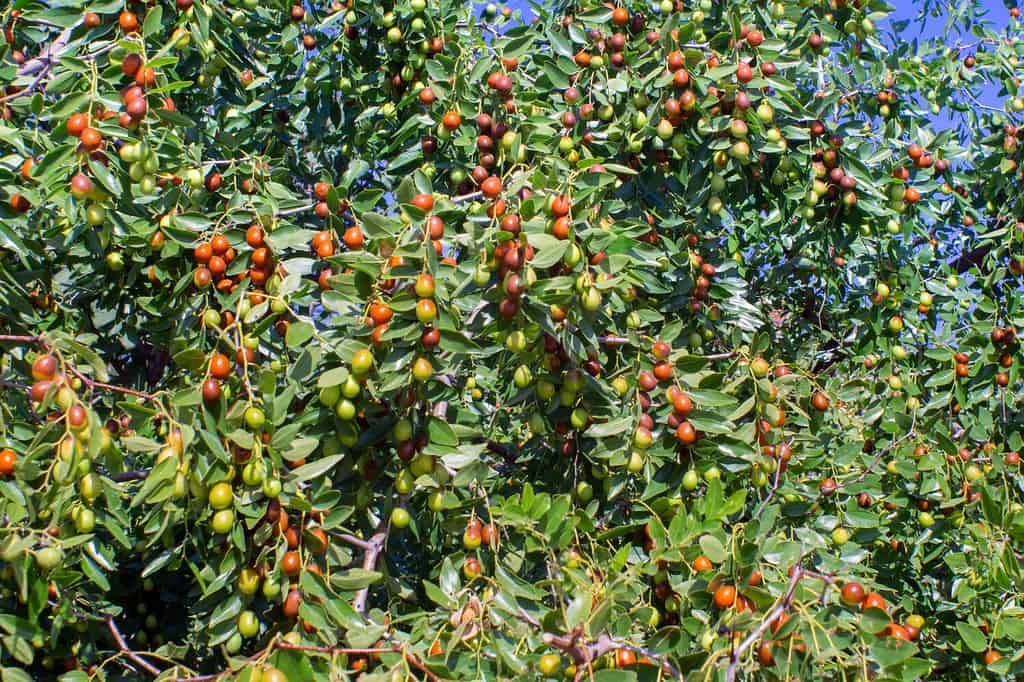
The Indian jujube is fantastic as a fiber supplement.
©darksoul72/Shutterstock.com
3. Imbu
Classification: Spondias tuberosa
The imbu, or umbu fruit, is an intriguing and unique fruit that’s native to northeastern Brazil. This fruit has a spherical or slightly oblong shape, about the size of a plum, with a rough texture on the surface. Its skin is a yellow-green color that turns brighter as it ripens. Beneath this skin, you’ll find a juicy and fibrous pulp, which is creamy white and surrounds a large central pit.
The umbu tree thrives in semi-arid climates and is incredibly resilient, capable of surviving long dry spells. This hardiness has earned it the nickname “Tree of Life” among locals. It’s common to find these trees sprouting along roadsides, in pastures, and in the dry forests of Brazil.
As for nutrition, the imbu fruit is packed with benefits. It’s a great source of vitamin C, vital for immune system support and antioxidant action. Additionally, it delivers a substantial amount of dietary fiber, assisting in digestive health and a feeling of fullness. It also provides key minerals such as calcium and phosphorus. The imbu fruit is not just a delightful treat, but also a healthy addition to a balanced diet.
4. Ice Cream Bean
Classification: Inga spp.
The ice cream bean is a wonderful fruit with an enticing name and a flavor that is just as interesting. Its exterior is anything but conventional; the fruit is enclosed in a lengthy, leathery pod that can reach a length of two feet. This pod, which is either green or brown depending on how ripe it is, contains many black seeds that are enclosed in a white, cotton-like pulp.
The component of the ice cream bean that is commonly ingested is called the pulp. It gets its name from the sweet, delicate flavor of the pulp, which is frequently compared to vanilla ice cream. This unusual fruit is indigenous to South America, namely the Amazon jungle, where it may be found on big, quickly-growing trees that can grow to heights of up to 60 feet.
The ice cream bean doesn’t fall short when it comes to nutrients. It is a great supply of dietary fiber, which facilitates digestion and encourages a sense of satiety. In addition, the fruit is a rich source of potassium, iron, and vitamin C, which helps to maintain the immune system. Thus, the ice cream bean offers notable health advantages in addition to tantalizing taste sensations.
5. Indian Prune
Classification: Flacourtia indica
The Indian prune is an alluring fruit native to the tropical regions of Asia, including India. The fruit presents an oval to round shape, similar in size to a small apple or large cherry, and it possesses a smooth, shiny surface. As it ripens, the Indian prune transforms from a vibrant green to a dark purplish-black hue. Inside, the juicy pulp is light green and surrounds a cluster of small seeds.
This fruit tree favors warmer climates, frequently seen thriving in both lowland and highland tropical regions. It’s highly versatile, growing in various environments, from mixed forests to areas near sea coasts, or as part of home gardens and orchards.
As for its nutritional profile, the Indian prune has plenty to offer. It’s rich in vitamin C, a potent antioxidant that boosts the immune system. It also provides an ample amount of dietary fiber, beneficial for digestion, and promotes a feeling of fullness. Plus, it has a high water content, making it an excellent hydrating snack. With its enticing flavor and nourishing benefits, the Indian prune is a valuable addition to a healthy diet.
6. Indian Fig
Classification: Opuntia ficus-indica
The fruit known as the Indian fig is quite an interesting fruit that starts with I. The Indian fig is around the size of a small to medium apple and has an oval shape. Depending on the type, its skin can range from yellow to a vivid reddish-purple and is coated in tiny, prickly spines that must be carefully removed before consuming. Its inside is filled with several tiny, hard seeds and has a soft, delicious pulp that ranges in color from white to crimson.
Indian figs are ironically indigenous to Mexico, but they have been widely farmed around the world, including portions of the Mediterranean, the southern United States, and India. It frequently grows in desert environments and likes dry and semi-arid conditions.
The Indian fig is a veritable gold mine of nutrients. It contains a lot of dietary fiber, which promotes healthy digestion and reduces appetite. The Indian fig also contains significant amounts of antioxidants and vitamin C, both of which are essential for enhancing immunity and fending off free radicals. It also offers potassium, magnesium, and calcium. Because of these nutrients, the Indian fig is quite beneficial to your health in addition to offering a unique culinary experience.
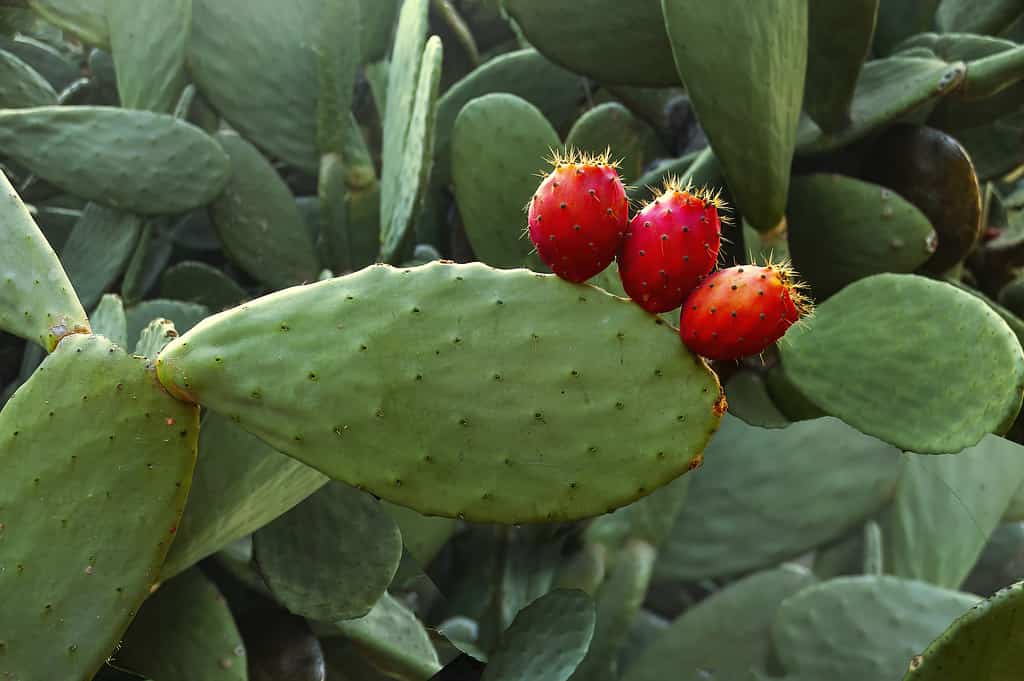
Indian figs are not native to India and are instead native to Mexico.
©iStock.com/barbaraaaa
7. Indian Almond
Classification: Terminalia catappa
The distinctive Indian almond comes from Asia’s tropical countries, including India. The almond’s fruit is generally oval, around three inches long, and when mature, it takes on a yellow to red hue. The almond itself is enclosed in a tough, woody shell inside this fruit. The form and flavor of the Indian almond are somewhat flattened and buttery with a touch of sweetness.
Since Indian almond trees can endure saltwater and flourish in tropical climes, they are frequently found growing near rivers and coasts. These magnificent trees have enormous, spreading branches that cast a wide shade and may reach heights of up to 115 feet.
The Indian almond delivers on the nutritional front. It contains a lot of good fats, which are crucial for cellular development and vitality. Its satiating qualities are further enhanced by the substantial quantity of protein it contains. The Indian almond is also a good source of antioxidants, such as vitamin E, which helps guard your cells against oxidative stress. Additionally, it contains potassium and magnesium, two crucial minerals. The Indian almond is a delicious and wholesome complement to any diet.
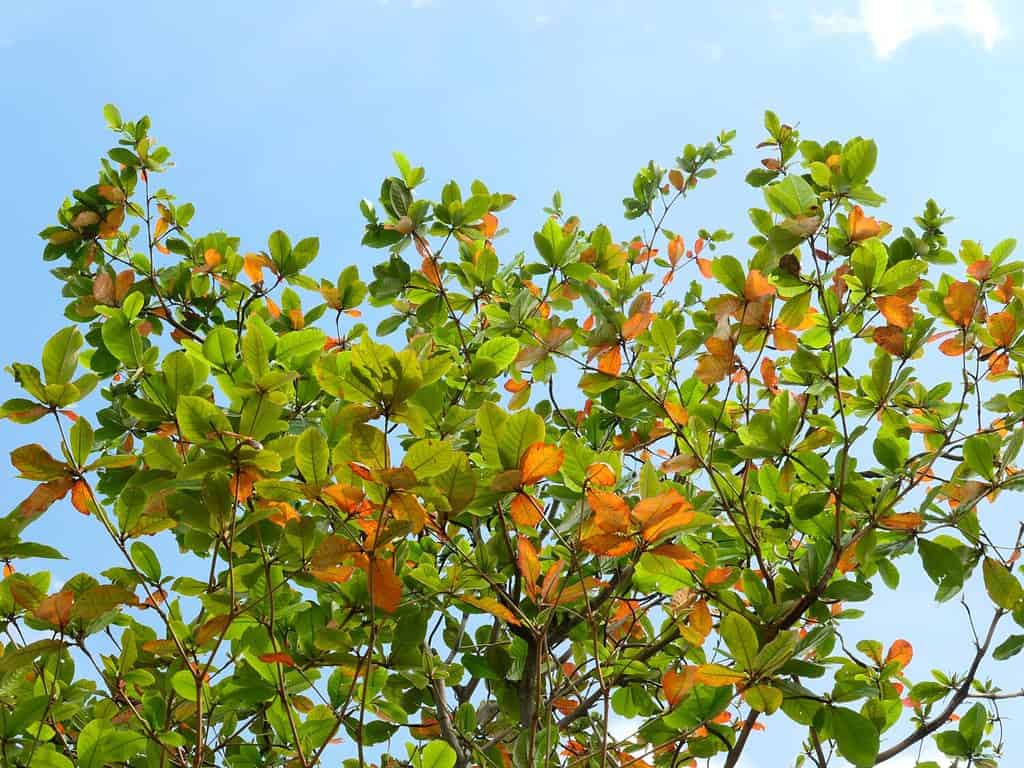
Indian almonds are also known for being produced by very aesthetically-pleasing trees that are often used in landscaping.
©komkrit Preechachanwate/Shutterstock.com
8. Ichang Papeda
Classification: Citrus ichangensis
The Ichang papeda is a distinctive fruit native to East Asia, specifically China. The fruit has an intriguing appearance, with a shape that falls somewhere between a lemon and a grapefruit. It typically measures two to three inches in diameter, with a rough and bumpy rind that transforms from green to yellow as it ripens. Inside, its segmented flesh is a pale yellow and is known for its sour, somewhat bitter taste.
The Ichang papeda grows on an evergreen shrub or small tree, which typically thrives in subtropical to tropical regions. The plant is noted for its cold hardiness and can survive temperatures that would damage other citrus varieties.
When it comes to nutritional benefits, the Ichang papeda has a lot to offer. Like other citrus fruits, it is rich in vitamin C, an antioxidant that boosts the immune system, promotes healthy skin, and aids in wound healing. The fruit also provides dietary fiber, promoting good digestion and contributing to feelings of fullness. Although its taste might be too tart for some, the Ichang papeda is a nutritious choice for those interested in exploring unique fruits from around the world.
9. Imbe
Classification: Garcinia livingstonei
Small and exotic, the imbe fruit is native to Africa, notably the southern and eastern parts of the continent. The fruit is about the size of a cherry, round or slightly oval, and has a smooth, glossy skin that, when mature, changes from orange to red. The imbe’s delicious, acidic flesh surrounds a single, sizable seed beneath the skin.
Imbe trees are quite flexible and can grow in a wide range of climatic conditions and soil types, although they do best in subtropical to tropical areas. Reaching a height of 20 feet, these hardy trees are typically found in open forests and beside riverbanks.
The imbe provides a variety of advantages in terms of nutrition. It is abundant in vitamin C, a strong antioxidant that supports skin health, maintains a healthy immune system, and speeds up the healing of wounds. The imbe also contains a lot of dietary fiber, which helps with digestion. It is a fruit with very few calories, making it a sensible option for anyone limiting their calorie intake. The imbe is a tasty and healthful complement to any diet because of its unique flavor and health advantages.
10. Indian Gooseberry
Classification: Phyllanthus emblica
Another notable fruit that comes from India is the Indian gooseberry, sometimes referred to as “amla”. The fruit is tiny, with a diameter of about one to two inches, and is rounded to slightly oblong. It has six vertical stripes or furrows and a characteristic, firm texture with a pale green color.
Indian gooseberry trees flourish in Southeast Asia’s tropical and subtropical climates, where they are frequently discovered in woods and grown in gardens and orchards.
The Indian gooseberry is a nutritional powerhouse in terms of its composition. It is well known for having a very high vitamin C content, which supplies a significant amount of this immune-stimulating antioxidant. Additionally, the fruit has plenty of nutritional fiber, which aids in digestion and can increase feelings of fullness. It also provides an abundance of other minerals, like calcium, B vitamins, and iron. Due to its numerous health benefits, including those that improve skin health, promote heart health, and help digestion, Indian gooseberry has been utilized in Ayurvedic medicine for millennia. The Indian gooseberry is a fruit that is very important because of its distinctive flavor and outstanding nutritional advantages.
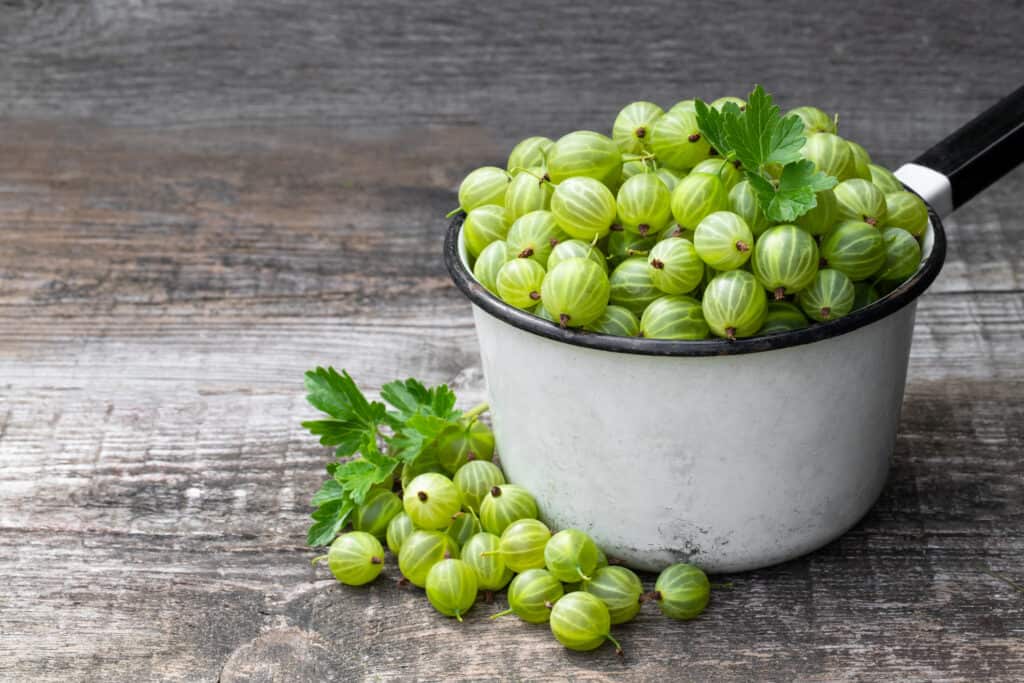
Indian gooseberries are delicious on their own, as well as in jams and chutneys.
©iStock.com/Lena_Zajchikova
11. Italian Plum
Classification: Prunus cocomilia
The Italian plum is an appealing fruit with a rich, sweet flavor. It is a variant of the European plum. The fruit has an oval form, is about the size of a tiny apple, and has glossy skin that, when mature, changes color from a deep blue to practically black. When you cut into the fruit, you will discover a solitary hard seed enclosed in golden, tasty flesh.
Italian plums are widely grown in temperate areas of the world, such as Europe and North America, where they are produced in orchards and private gardens equally.
Italian plums are beneficial in terms of nutrients. As a good source of dietary fiber, they support digestion and encourage a sense of fullness. They also include vitamin K, which is necessary for blood clotting, and vitamin C, an important antioxidant for immunity and overall health.
More Fruits That Start With I
| # | Fruit | Classification |
|---|---|---|
| 1 | Ilama | Ilama |
| 2 | Indian Jujube | Ziziphus mauritiana |
| 3 | Imbu | Spondias tuberosa |
| 4 | Ice Cream Bean | Inga spp. |
| 5 | Indian Prune | Flacourtia indica |
| 6 | Indian Fig | Opuntia ficus-indica |
| 7 | Indian Almond | Terminalia catappa |
| 8 | Ichang Papeda | Citrus ichangensis |
| 9 | Imbe | Garcinia livingstonei |
| 10 | Indian Gooseberry | Phyllanthus emblica |
| 11 | Italian Plum | Prunus cocomilia |
| 12 | Izu Persimmon | Diospyros kaki ‘Izu’ |
| 13 | Indian Hog Plum | Spondias mombin |
| 14 | Illawarra Plum | Podocarpus elatus |
| 15 | Ibimi Plum | Diospyros mespiliformis |
| 16 | Island Apple | Anisomeles malabarica |
| 17 | Ivy Gourd | Coccinia grandis |
| 18 | Iyokan | Citrus × iyo |
| 19 | Incaberries | Physalis peruviana |
| 20 | Imarti Fruit | Pithecellobium dulce |
| 21 | Iroko Fruit | Milicia excelsa |
Thank you for reading! Have some feedback for us? Contact the AZ Animals editorial team.

